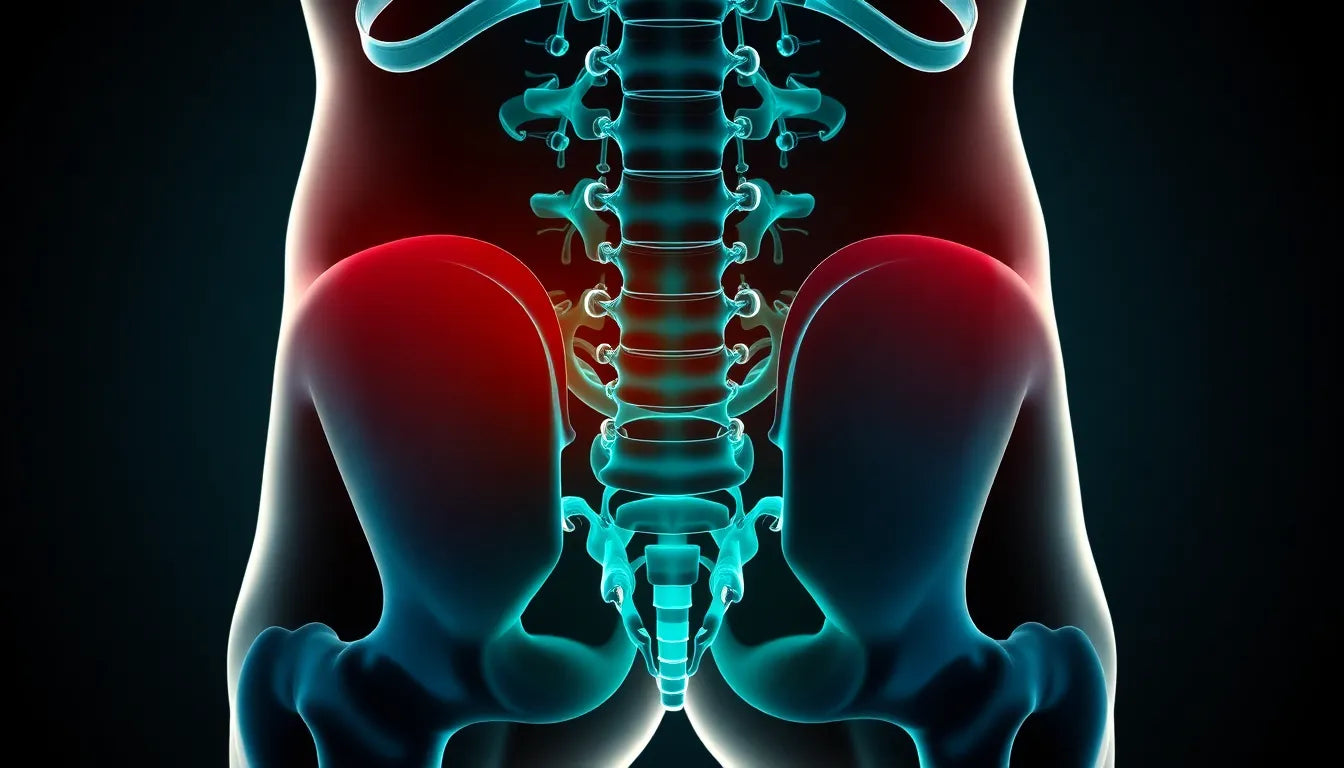In today's fast-paced work environment, the quest for comfort and productivity is more crucial than ever. Whether you're stationed at a desk or managing tasks on a factory floor, the concept of ergonomics plays an integral role in achieving these goals. As businesses strive to enhance employee well-being and efficiency, the ergonomics triangle emerges as a pivotal model for creating a harmonious and supportive workspace.
understanding the ergonomics triangle
The ergonomics triangle is a comprehensive model designed to balance three core elements: the worker, the work (machine or task), and the work environment. Each point of the triangle represents a critical aspect of workplace ergonomics:
- Man (Worker): This element focuses on the individual capabilities of the worker, including anthropometrics, fitness levels, and psychological factors. It's about understanding the unique physical and mental needs of each employee to tailor ergonomic solutions that fit them best.
- Machine (Work): This involves the complexity of tasks, the design of equipment, and the demands placed on workers. Optimizing this element means ensuring that tools and tasks are designed to support natural postures and minimize strain.
- Environment (Workplace): This considers the physical setting, including lighting, climate, and other surrounding influences. A well-designed environment reduces fatigue and enhances comfort, contributing to a more productive work atmosphere.
The ergonomics triangle serves as a foundation for developing ergonomic solutions that not only enhance comfort but also boost efficiency. By addressing each element, organizations can create a work environment that supports employee health and productivity.
the rising importance of ergonomics
In recent years, there has been a growing awareness of the importance of ergonomics in the workplace. More companies are recognizing the role of ergonomic practices in reducing musculoskeletal disorders (MSDs) and improving overall work performance. As employees spend long hours at their workstations, the need for ergonomic interventions becomes increasingly apparent.
Implementing ergonomic solutions based on the ergonomics triangle can lead to significant benefits. These include reduced risk of injury, enhanced employee satisfaction, and increased productivity. By focusing on the balance between the worker, the work, and the environment, businesses can unlock new levels of comfort and efficiency, ultimately leading to a healthier and more motivated workforce.
As the conversation around workplace ergonomics continues to evolve, the ergonomics triangle remains a vital tool for organizations aiming to create supportive and dynamic work environments. By understanding and applying the principles of this model, companies can ensure that their employees are equipped to perform at their best, both physically and mentally.
exploring the ergonomics triangle in-depth
Delving deeper into the ergonomics triangle reveals the intricate balance between the worker, the work, and the work environment. Each component plays a pivotal role in crafting a workspace that prioritizes health, safety, and efficiency.
man (worker)
The worker is at the heart of the ergonomics triangle. Understanding individual capabilities is crucial for tailoring ergonomic solutions. Anthropometric data, which includes measurements of body dimensions, helps in designing workstations that fit a diverse range of body types. Additionally, considering fitness levels and psychological factors ensures that the workspace supports both physical and mental well-being.
Personal adjustments, such as adjustable chairs and desks, empower workers to customize their workstations to fit their unique needs. For instance, a chair with adjustable lumbar support can significantly reduce lower back strain, while a desk with variable height settings accommodates both sitting and standing postures, promoting movement and reducing fatigue.
machine (work)
The work element focuses on task complexity, equipment design, and work demands. Ergonomic design principles advocate for tools and equipment that support neutral postures and minimize repetitive strain. For example, keyboards and mice designed to maintain a natural wrist position can prevent conditions like carpal tunnel syndrome.
Moreover, the complexity of tasks should be aligned with the worker's capabilities. Simplifying tasks or providing adequate training can enhance productivity and reduce the risk of errors. Ergonomic interventions in this area not only improve comfort but also enhance job satisfaction and efficiency.
environment (workplace)
The work environment encompasses the physical setting, including lighting, climate, and surrounding influences. Proper lighting reduces eye strain and enhances focus, while an optimal climate maintains comfort and prevents distractions caused by temperature extremes.
Practical modifications to the environment can significantly enhance workplace comfort. For instance, optimizing natural light exposure and using adjustable blinds can create a more inviting and productive workspace. Similarly, reducing noise through soundproofing or strategic placement of noise-absorbing materials helps maintain concentration and reduces stress.
implementing ergonomic solutions
Applying the ergonomics triangle model in the workplace involves a series of actionable steps. A comprehensive checklist can guide the setup of an ergonomic workstation, focusing on key elements like chair adjustments, desk height, and monitor placement. Ensuring that the top of the monitor is at or slightly below eye level can prevent neck strain, while maintaining an arm's length distance helps reduce eye fatigue.
Customization is key to ergonomic success. Encouraging employees to personalize their workstations fosters a sense of ownership and ensures that ergonomic interventions meet individual needs. The "golden triangle" concept, which emphasizes the integration of adjustable chairs, appropriate desk heights, and optimal monitor placement, serves as a practical guide for creating ergonomic office setups.
risk assessment and task analysis
The ergonomics triangle is an invaluable framework for task analysis and risk assessment. By evaluating the alignment between worker capabilities and job demands, potential mismatches can be identified and addressed. This proactive approach helps prevent discomfort and injury, ultimately leading to a safer and more productive work environment.
Employers can use the ergonomics triangle to conduct regular assessments, ensuring that ergonomic practices evolve alongside changes in tasks or workforce demographics. This continuous improvement mindset not only enhances comfort but also boosts overall workplace morale and efficiency.
In conclusion, the ergonomics triangle offers a comprehensive approach to workplace ergonomics, balancing the needs of the worker, the work, and the environment. By implementing tailored ergonomic solutions, businesses can unlock new levels of comfort and productivity, creating a healthier and more motivated workforce.
real-world applications of the ergonomics triangle
The practical application of the ergonomics triangle is evident in various workplaces that have embraced this model to enhance comfort and productivity. By integrating ergonomic principles into their operations, these organizations have witnessed tangible improvements in employee well-being and performance.
One notable example is a tech company that revamped its office layout based on the ergonomics triangle. By focusing on the worker, they provided adjustable workstations that catered to individual needs, ensuring that each employee could personalize their workspace for optimal comfort. For the work aspect, they introduced ergonomic keyboards and mouse designs that minimized repetitive strain injuries. To address the environment, they optimized lighting and installed sound-absorbing panels to reduce noise distractions. As a result, the company reported a significant decrease in musculoskeletal complaints and an increase in overall job satisfaction.
In the manufacturing sector, a factory implemented the ergonomics triangle by re-evaluating its assembly line processes. They tailored tasks to match worker capabilities, introduced ergonomic tools that supported neutral postures, and improved the physical environment by controlling temperature and humidity levels. These changes led to a reduction in workplace injuries and an uptick in productivity, showcasing the effectiveness of the ergonomics triangle in diverse settings.
visual aids to understand the ergonomics triangle
Visual aids play a crucial role in illustrating the ergonomics triangle and its components. Diagrams or infographics can help readers visualize how the worker, work, and environment interact to create a balanced ergonomic setup. For instance, a simple triangle diagram with each point labeled can effectively convey the interconnectedness of these elements. Additionally, tables comparing pre- and post-implementation metrics can highlight the measurable benefits of adopting ergonomic solutions.
frequently asked questions
What is the ergonomics triangle?
The ergonomics triangle is a model that balances three core elements: the worker, the work (machine/task), and the work environment, to create ergonomic solutions.
How can I apply the ergonomics triangle in my workplace?
By assessing and optimizing each element of the triangle: personalizing workstations, selecting supportive equipment, and modifying environmental factors.
What are the benefits of using the ergonomics triangle?
Improved comfort, reduced risk of musculoskeletal disorders, increased productivity, and enhanced employee satisfaction.
Can the ergonomics triangle be applied to all types of work environments?
Yes, the principles of the ergonomics triangle can be adapted to various settings, from office environments to manual handling tasks.
conclusion
The ergonomics triangle offers a comprehensive approach to enhancing workplace comfort and productivity. By balancing the needs of the worker, the work, and the environment, businesses can create ergonomic solutions that lead to healthier, more motivated workforces. Whether in an office or a factory, applying the principles of the ergonomics triangle can unlock new levels of efficiency and satisfaction, making it a vital tool in modern workplace design.


















